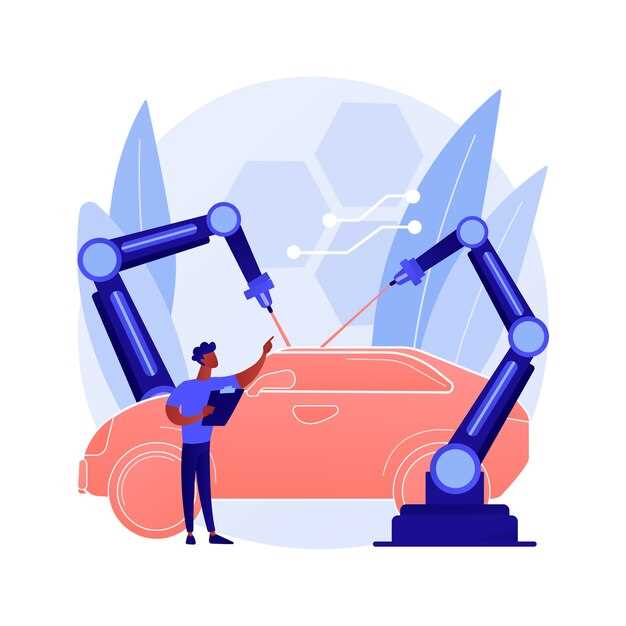Prepare for a shift in transportation. By 2025, several major cities will see pilot programs for fully autonomous vehicles, allowing residents to experience the convenience and safety these innovations promise. Test drives and limited rideshare programs will showcase technology’s readiness to integrate into urban environments.
Watch for regulatory changes in the next few years. Governments will streamline approval processes for self-driving technologies, paving the way for wider adoption. Policymakers will focus on establishing safety standards, which are critical to ensure public trust and security.
By 2030, expect significant advancements in artificial intelligence that enhance vehicle decision-making capabilities. Industry leaders will introduce vehicles equipped with improved sensors and algorithms, facilitating real-time data processing. These developments will contribute to a marked decline in traffic accidents as vehicles begin to communicate with one another to optimize routes and minimize hazards.
Investments in infrastructure will accelerate alongside these advancements. Smart roads equipped with communication systems will enhance the interaction between vehicles and their environment. This integration will ensure a seamless flow of both traffic and information, paving the way for smoother and safer journeys.
By 2040, the presence of autonomous vehicles will be ubiquitous. Shared self-driving fleets will dominate urban areas, offering a cost-effective alternative to private car ownership. This transition will lead to reduced congestion and lower greenhouse gas emissions, transforming cities into more sustainable environments.
Current State of Autonomous Vehicle Technology
Autonomous vehicle technology integrates advanced sensors, machine learning algorithms, and robust software systems to achieve varying levels of automation. Currently, many manufacturers test vehicles equipped with Level 2 and Level 3 automation on public roads. These vehicles can handle some driving tasks but still require driver supervision.
Companies like Tesla, Waymo, and Cruise are at the forefront, refining their technologies. Tesla’s Full Self-Driving (FSD) Beta represents a significant leap, offering advanced driver assistance features, though it still requires user oversight. Waymo’s operations in limited urban environments showcase fully autonomous capabilities without human intervention, setting a benchmark for others in the industry.
In terms of regulatory frameworks, various regions are working on laws to accommodate autonomous driving. The U.S. has seen states like California and Arizona pave the way with policies that support testing and deployment. However, consistent regulations across jurisdictions remain a challenge, slowing broader adoption.
| Company | Technology Level | Current Deployment |
|---|---|---|
| Tesla | Level 2/3 | Limited Beta Testing |
| Waymo | Level 4 | San Francisco, Phoenix |
| Cruise | Level 4 | San Francisco |
| Baidu | Level 4 | Selected Chinese Cities |
Safety remains a top concern. Incidents involving autonomous vehicles highlight the need for rigorous testing and validation. Companies continually enhance their systems through simulations and real-world data collection to improve decision-making in complex environments.
Collaboration with municipalities for smart infrastructure developments and ongoing public engagement is crucial for building trust and acceptance. Understanding how autonomous vehicles interact with traditional road users, including pedestrians and cyclists, is essential for integration into existing transport systems.
Investment in research and development continues to surge, with projections indicating substantial growth in the sector. As technology matures, expect more widespread deployment, increased investment, and evolving public perceptions surrounding autonomous vehicles.
Regulatory Changes Impacting Self-Driving Cars
Implement clear safety standards for self-driving vehicles to enhance public trust. Countries like the United States and Germany are drafting specific guidelines that address functionality, cybersecurity, and consumer protection. These measures increase accountability for manufacturers and developers.
Encourage collaboration between government bodies and technology firms. Initiatives such as the U.S. Department of Transportation’s Automated Vehicle Strategic Plan promote public-private partnerships, facilitating faster development of regulations that keep pace with technological advancements.
Implement strict testing protocols to evaluate self-driving capabilities. Regulatory bodies are requiring extensive real-world testing with detailed reporting requirements to monitor progress. Cases from California illustrate the benefits of transparency in testing, allowing for informed adjustments to regulations.
Adjust liability laws to reflect the shift towards automation. States like Michigan are exploring frameworks that clarify responsibility in accidents involving self-driving cars. This step is crucial for instilling confidence among consumers and manufacturers alike.
Monitor data privacy regulations as they relate to autonomous vehicles. New laws, such as the California Consumer Privacy Act, set the groundwork for data protection, ensuring that users’ data remains secure while allowing manufacturers to collect necessary information for vehicle improvements.
Consider regional differences in regulation. Countries such as Japan and South Korea have unique approaches, balancing innovation with safety. Analyzing these varying frameworks can provide insights for developing a cohesive international regulatory strategy that works for all stakeholders.
Facilitate public awareness and education campaigns regarding self-driving technology. Engaging the public helps demystify autonomous vehicles and encourages acceptance. Massachusetts’s efforts in community engagement through workshops and seminars set a positive example.
Emphasize the importance of adaptive regulation. Regulations must evolve alongside technological advancements, preventing obsolescence. Establishing regular review periods allows for the timely adjustment of rules, ensuring they remain relevant.
Timeline of Major Milestones in Autonomous Vehicle Development
In 1925, the first driverless car demonstration took place in New York City, where a radio-controlled vehicle drove through traffic. This event sparked early interest in autonomous technology.
In 1986, Federico Faggin and his team at the Stanford Research Institute developed the ” autonomous land vehicle in a neural network” (ALVINN), designed to navigate through traffic using artificial intelligence. This project laid the groundwork for modern AI applications in self-driving cars.
1995 marked a significant achievement with the DARPA Grand Challenge, where a vehicle known as “No Hands Across America” completed a 2,000-mile trip across the United States. This event captured public attention and encouraged research investments in autonomous driving.
In 2004, the first DARPA Grand Challenge took place, with autonomous vehicles competing to navigate a 150-mile course in the Mojave Desert. Although no vehicle completed the challenge, the event highlighted the potential of self-driving technology.
By 2010, Google announced its self-driving car project, which led to extensive testing on public roads. Their innovative approach increased development momentum and brought significant media exposure to autonomous vehicles.
In 2016, Tesla introduced its Autopilot feature, enabling cars to control speed, braking, and steering under certain conditions. This made advanced driver-assistance systems more accessible to the average consumer.
2018 witnessed Waymo launching the first commercial self-driving taxi service in Phoenix, Arizona. This milestone marked a shift in public perception, demonstrating the feasibility of autonomous ride-hailing services.
In 2020, the release of numerous regulatory frameworks aimed at governing autonomous vehicle testing emerged, providing guidelines for manufacturers and testers, promoting a safer development environment.
The year 2023 saw significant advancements, as several companies began deploying Level 4 autonomous vehicles in select urban areas, eliminating the need for human intervention in defined scenarios. This marked a key transition toward widespread use.
Looking ahead, expect continuous improvements in safety, efficiency, and technology integration, paving the way for a more automated transportation future.
Challenges in Self-Driving Car Adoption and Implementation
Regulatory frameworks must adapt to include guidelines for autonomous vehicles. Policymakers need to establish clear regulations that address liability, safety standards, and data protection. Engaging with stakeholders, including manufacturers and public safety organizations, helps create balanced policies.
Public perception shapes the acceptance of self-driving cars. Conducting informative campaigns can mitigate fears surrounding safety and privacy. Clear communication about advanced safety features, testing protocols, and the technology’s reliability fosters trust among potential users.
Technological limitations present hurdles. Machine learning algorithms require extensive training data from diverse driving environments. Investing in high-quality data collection and simulation can bridge this gap, enabling systems to respond effectively to various scenarios.
Infrastructure readiness is another critical factor. Cities need to upgrade existing road systems to support smart vehicles. Collaboration between city planners and automotive manufacturers can lead to integrated solutions that enhance traffic flow and safety.
Cost remains a barrier. Reducing production expenses through advances in manufacturing and sourcing can make self-driving cars more accessible. Developing affordable models will encourage widespread adoption and stimulate market growth.
Finally, ethical considerations must be addressed. Manufacturers should engage in discussions about decision-making algorithms in potential accident scenarios. Public involvement in these discussions can lead to more ethically grounded practices in the deployment of autonomous technology.
Key Companies Leading the Self-Driving Revolution
Focus on Tesla, a pioneer with its Autopilot system, which integrates advanced driver-assistance features. Tesla routinely enhances its software through over-the-air updates, increasing vehicle capabilities and safety.
Waymo, originally a Google project, stands out for its robust real-world testing and extensive data collection. Its fully autonomous ride-hailing service in select areas of Phoenix, Arizona, showcases its technological progress and reliability.
General Motors entered the fray with its Cruise division, emphasizing urban mobility solutions. By deploying autonomous vehicles in San Francisco, Cruise aims to refine its technology through real-time interactions in complex city environments.
Aptiv, collaborating with Lyft, enhances self-driving technology while ensuring passenger safety. The partnership showcases practical applications of autonomous driving, focusing on scalable solutions in ride-sharing services.
Amazon’s investment in Zoox marks its commitment to reshaping urban transport. Zoox is developing a bidirectional vehicle designed specifically for autonomous operation, integrating unique features for passenger comfort and safety.
Ford is making strides with its investment in Argo AI, focusing on autonomous vehicles for commercial use. Testing in several major cities highlights Ford’s intention to integrate self-driving technology into delivery services and ridesharing platforms.
These companies represent a diverse approach to self-driving technology, each contributing unique strengths to the industry. Tracking their developments provides insight into the future of transportation.
Future Trends and Innovations in Autonomous Vehicles
Invest in AI-driven algorithms for real-time decision-making, enhancing the responsiveness and adaptability of autonomous vehicles. These algorithms process vast amounts of data from sensors, enabling vehicles to navigate complex environments with precision.
Focus on vehicle-to-everything (V2X) communication technologies. This system allows vehicles to communicate with each other as well as with infrastructure, providing critical information about traffic conditions and hazards. Implementing V2X can significantly improve safety and traffic flow.
Prioritize the integration of advanced sensor technologies, such as LiDAR, radar, and high-definition cameras. These sensors create a detailed map of the environment, allowing vehicles to detect obstacles and navigate safely under various conditions, including poor weather.
Explore advancements in battery technology and energy efficiency to promote sustainability. Longer-lasting batteries and faster-charging capabilities will make electric autonomous vehicles more appealing to consumers and reduce reliance on fossil fuels.
Enhance user experience through intuitive interfaces and personalized settings. Voice recognition and adaptive features will allow drivers and passengers to interact seamlessly with their vehicles, improving comfort and convenience.
Consider collaboration with urban planners to design smart cities that facilitate the integration of autonomous vehicles. Smart traffic signals and dedicated lanes can optimize traffic flow and reduce congestion, making rides smoother and safer.
Implement rigorous cybersecurity measures to protect vehicles from hacking and data breaches. As vehicles become more connected, securing their systems will be paramount to maintaining user trust and safety.
Invest in continuous learning systems for vehicles to improve over time through machine learning techniques. This approach allows vehicles to adapt to driver behaviors and environmental changes, resulting in enhanced performance.
- Adopt 5G connectivity for faster data transmission and improved reliability.
- Integrate more sophisticated route planning algorithms for efficient travel.
- Enhance fleet management systems for better coordination of autonomous taxis and delivery services.
Collaborate with regulatory bodies to establish and adapt regulations that address safety, liability, and operational guidelines for autonomous vehicles. Staying aligned with regulations ensures smoother deployment and public acceptance.
Stay alert to advancements in materials science that can contribute to vehicle weight reduction and increase safety features. Lighter vehicles lead to better energy efficiency without compromising protection.






